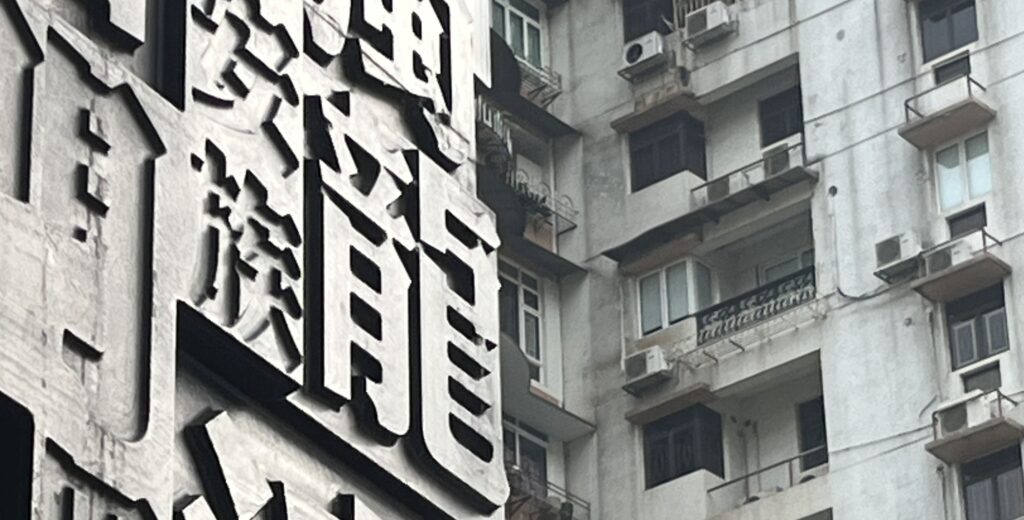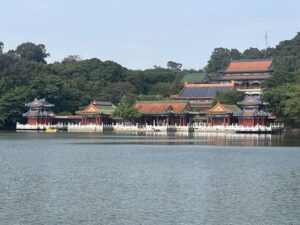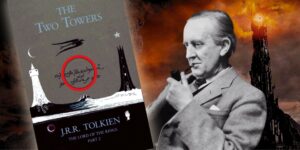The City of God in Asia


I’ve deliberately chosen this hotel in Zhuhai because it is in walking distance of Gongbei, the massive border crossing to Macao. I join the dawn hordes streaming towards the border, across the wide expanse of its square out in front. There are men in hi-viz jackets and schoolgirls in uniform, many of them joining the “Macao Residents” line – so, in fact, not Macao residents at all, but actually living over the border and commuting every day.
The kettling is designed for thousands of people, but there is only one person in front of me at the Foreigners line to leave China, and again at the line to enter Macao. I am through in fifteen minutes, and at first glance, I might as well be back in Hong Kong again. But the streets are narrower, there is more tiling on everything, and the first shop I see is St Mary’s Bakery.

In the course of my day in Macao, I manage to somehow walk across the entire old town, from the northern warren of tower blocks, past yet another statue of Lin Zexu, hero of the Opium Wars, through the tunnel that passes under Guia Hill, around the empty mall at Fisherman’s Wharf, and all the way to the statue of the Goddess of Mercy that faces the casino-riddled island of Taipa. The signage is all bilingual in Portuguese and Chinese, but while I hear Mandarin, Hakka and Cantonese spoken around me, I do not hear a single word of Portuguese all day.

Macao’s signature location is the Ruins of St Paul’s, a towering church façade at the top of steps in the old town, a magnet for hordes of selfie-taking influencers and girls who think that a V-sign, jumping in the air, or pointing poutily makes their photos more interesting. Google Macao, and the Ruins of St Paul’s is among the first images that show up. People show up, take their picture and then sod off back into the maze of side-streets, where pushy hawkers try to get them to buy Macao fridge magnets and pork cakes.
St Paul’s is not the name of the church. The church is called the Church of the Mother of God. St Paul’s is the name of the college complex that it was part of, founded in 1573 by the Italian Jesuit Alessandro Valignano. Valignano will be a name familiar to many in this parish, because he is a major character in my book Christ’s Samurai. Horrified that missionaries in Japan didn’t speak Japanese, he set up a Japanese-language boot camp in Macao, which he intended as “the City of God in Asia” – the centre of all Jesuit activities. St Paul’s College was the result, the site of Macao’s first printing press, which churned out Japanese learning materials and… Bible stuff. In the 1630s, it became a training ground for Japanese priests (exiles and the children of exiles) ready to undertake the one-way clandestine mission to enter Japan and administer to the underground Christian communities.

In fact, so many exiled Japanese were in Macao at the time that locals mistook them for the advance party of a Jesuit scheme to invade China, with their churches assumed to be forts and their seminaries taken for barracks. The church façade was partly built by Japanese masons, living in exile as their country turned increasingly anti-Christian. This has turned the extant stonework into one of the only surviving examples of what some have called “Japanese Baroque”, with a quirky take on Christian themes, and multiple appearances of Japanese chrysanthemums. The Virgin Mary is depicted subduing a seven-headed dragon, and a skeleton exhorts passers-by in Chinese: “Remember death and do not sin.”
The seven-headed beast of Revelation 17 is supposedly ridden by Babylon the Great, the Mother of Harlots and the Abominations of the Earth, so quite possibly the legend next to it that reads “The Virgin Mary Tramples on the Dragon’s Head” is a desperate attempt to explain why she’s there, which only muddles thing further, because there is an image of another woman on the dragon, and an image of Mary next to the dragon, and I sense we are looking at the 1630s equivalent of an argument between rival commenters in Google Docs as a priest frantically tries to stop Dave the Japanese Stone Mason from accidentally committing any further carved heresies.

An inscription on a cornerstone reads: “Virgini Magnae Matri Civitas Macaensis Libens Posuit an. 1602”[The City of Macao built this Church in honour of the Great Virgin Mother in the year 1602]. By the “City of Macao”, it refers to the Christian inhabitants, who were persuaded by the incumbent Captain-Major to donate a half percent of their earnings to build a church if the ship they were waiting for turned out not to have been destroyed in a storm as expected. It was the first wager in Macao’s long gambling history, and paid off a few days later. But work on the building continued until 1640, leaving ample time for new Japanese workers to flee their homeland and to work on the façade.
The interior was also once a triumph of oriental artistry, although we can only imagine the decorations as reported by Peter Mundy in 1637: “Carved in wood, curiously guilt and painted with exquisite collours, as vermillion, azure, etts., Devided into squares, and att the Joyning of each squares greatt roses of Many Folds or leaves one under another, lessning till all end in a Knobbe.” There were also numerous pictures, now also lost, thought to have been made by Japanese students of Father Giovanni Nicolao, who formerly taught painting in Arima and Nagasaki, but arrived in Japan, with his students, in 1614 following the latest anti-Christian prohibition.

At least one painting by Nicolao’s students is known to have survived the fire that destroyed the building in 1835. It now hangs in St Joseph’s Seminary, nearby, and is an image of St Michael, drawn as only a Japanese painter would imagine him, clad in samurai armour, wielding a katana, his helmet decoration a ring of bursting rays. Takashi Miyanaga, in a 1995 article, determines that it must have been part of a roof image above the “Altar of St Michael” where several prominent Japanese Christians were buried, which would imply that there was, at very least, a second panel depicting the dragon that Michael is supposed to be fighting, although in the extant image, there are only a few of its flames landing near his foot.
Jonathan Clements is the author of Christ’s Samurai: The True Story of the Shimabara Rebellion. You can hear him talking about Japan’s Christian Century on the Subject to Change podcast.







